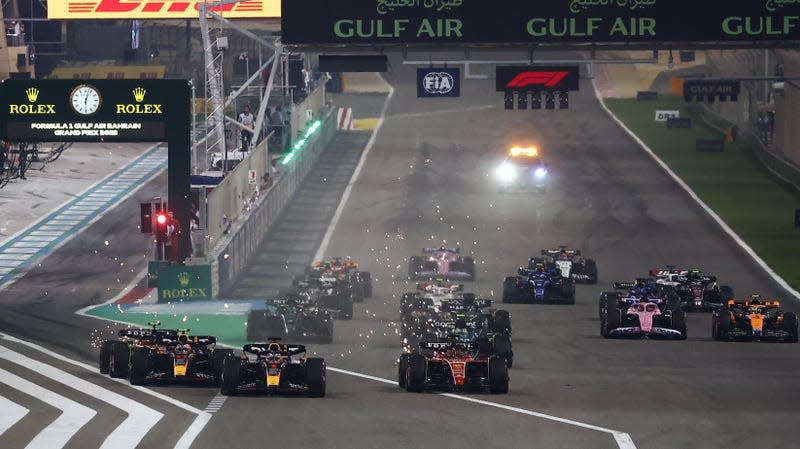Here's How Virtual Safety Cars Work In Formula One

Following the fatal crash of Jules Bianchi at the 2014 Japanese Grand Prix, Formula One developed and introduced a new virtual safety car system the next racing season, which slows drivers down during a caution without the need of a physical pace car on the track. This video from Chain Bear F1 on YouTube explains how the virtual safety car system works in Formula One:
As the name would suggest, the virtual safety car is not a real car. Instead, it’s a lap time determined by the FIA for each individual race track that racers have to follow under caution, similar to how a real safety car would control the speed of the drivers on a track.
Read more
In case you missed it:
The virtual safety car lap time is roughly 30 percent slower than what the FIA considers a standard racing lap. The video’s example shows the virtual safety car’s lap time for the Albert Park Circuit is 1:54:00, which is about a third slower than what’s considered the standard racing lap time of 1:28:00.
In order to maintain the gaps between drivers, though, the virtual safety car forces a 30 percent speed reduction through each section of the track, and not just overall. The sections are determined by marshaling sectors, with 20 marshaling posts dividing up the sectors.
Driver times are measured in these sectors every 50 meters, and the driver is informed how far ahead or behind the virtual safety car’s time they are so they can make the appropriate adjustments.
Drivers have to make sure they are slower than the virtual safety car at least once in each sector, and staying as close to the virtual safety car’s lap time is obviously ideal for avoiding any loss of racing position once the caution lifts.
Drivers have to be behind the virtual safety car’s time when the race goes green again, and are given a 10-to-15 second warning that the race is about to resume. If the driver fails to be slower than the safety car in any of the sectors, or before the race resumes, they get penalized.
The virtual safety car is beneficial because it can slow the field of cars down immediately, it can be used to maintain the gaps between the cars in the race without the need for the cars to bunch up, and it can last as long as needed without any potentially dangerous transitional moments with a physical safety car entering or exiting the field.
It’s a smart system for ensuring fellow drivers, medical staff and clean up crews are better protected, while not jeopardizing the positions of the drivers and having a major potential influence on the outcome of the race.
More from Jalopnik
Sign up for Jalopnik's Newsletter. For the latest news, Facebook, Twitter and Instagram.

 Yahoo Autos
Yahoo Autos 